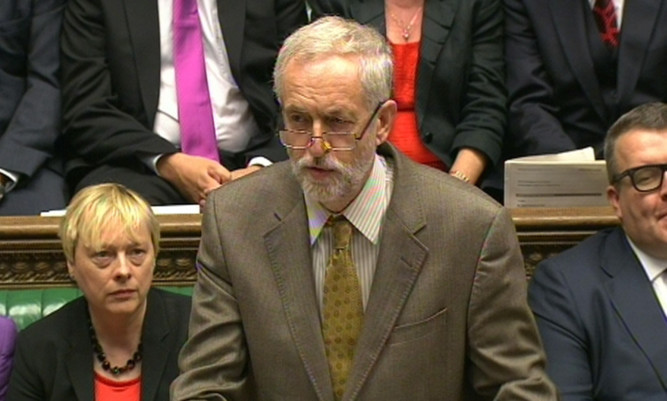New Labour leader Jeremy Corbyn lived up to his campaign pledge of “a new kind of politics” by crowd-sourcing his first appearance at Prime Minister’s Questions in the House of Commons.
Appearing opposite David Cameron for the first time at the despatch box, the Islington North MP told the Prime Minister that many voters had told him PMQs – and Parliament more generally – was “out of touch and too theatrical”.
He said an appeal to the public to tell Labour they would like to ask the PM had produced 40,000 responses, from which he had selected six to fill the questions traditionally given to the leader of the opposition during the 30-minute session.
One by one, he read out queries from Marie on housing, Steven on rents, Paul on tax credits, Claire on benefit thresholds, and Gail and Angela on mental health.
Mr Cameron said he welcomed the change in tone, telling his new Labour adversary that “no-one would be more delighted than me” if PMQs could become a “genuine exercise in asking questions and answering questions”.PMQs review: Jeremy Corbyn gets by with a little help from his friendsHe congratulated Mr Corbyn on his “resounding victory” and welcomed him to the frontbench, adding: “I know we will have many strong disagreements, I’m sure, between us at these exchanges but where we can work together in the national interest we should do so and I wish him well in his job.”
Mr Corbyn – who asked all his questions in a sober, low-key manner and did not resort to the kind of quips and put-downs normally exchanged in the weekly clash – thanked the PM for his commitment to answering questions “in a more adult way than it’s been done in the past”.
https://youtube.com/watch?v=eWV7iSkMtYk%3Frel%3D0
But the Conservative leader did not entirely resist the opportunity to go on the attack, repeatedly warning that the high-quality public services which Mr Corbyn demanded would not be affordable without a strong economy.
“We will not have a strong NHS unless we have a strong economy, and if the Labour Party is going to go down the route of unlimited spending, unlimited borrowing, unlimited tax rates, printing money, they will wreck the economic security of our country and the family security of every family in our country,” Mr Cameron told MPs.
“We won’t be able to afford a strong NHS without a strong economy.”
Labour aides said Mr Corbyn had looked at a “really good selection” of the 40,000 suggestions for questions he received from members of the public and selected the final six by picking issues that were among the most popular and “matched” his own priorities.
A team of Labour Party workers led by his chief of staff, Simon Fletcher, helped him prepare for the gruelling session.
Labour denied that the new approach gave Mr Cameron an easy ride by making it difficult to pin the Prime Minister down on a particular issue.
“The questions were very direct and they demanded clear answers,” a Labour source said.
Asked about policy differences that appear to have emerged between Mr Corbyn and his front bench, a Labour source said “lots of listening” would be done and some policies would be reviewed under the new leadership.
Labour sources said the party would not be divulging the identities of the voters whose questions were asked by Mr Corbyn, who wore a brown suit and gold-coloured tie to address MPs.
Kerry McCarthy, the new shadow secretary for environment, food and rural affairs, said the Labour leader may need to give the Prime Minister a harder time in future Commons encounters.
Speaking to BBC Radio 4’s World at One about Mr Corbyn’s first efforts, she said: “I think it worked well in terms of trying to set a different tone… to signal that it’s not about the Westminster bubble, it’s not about the Punch and Judy theatrical show, it’s a good way of having done that.
“In future PMQs he will probably have to respond more to what the Prime Minister says, but the problem is what the PM says you could almost have written it in advance. He comes out with these pat lines that don’t really respond to the questions and it’s very difficult to respond to that without getting in to the Punch and Judy yah-boo stuff and take it seriously.”
Conservative Energy Secretary Amber Rudd told the programme that Mr Corbyn’s tactic “worked well in terms of the new Labour leader getting over his points effectively – more borrowing, more spending, very limited defence”.
But Ms Rudd added: “As we saw from the heckling of the Prime Minister, it’s not entirely down to the Labour leader, it’s about the backbenchers as well and it’s about their opportunity to leap in.”
